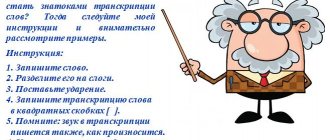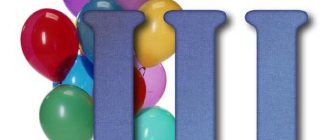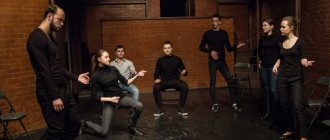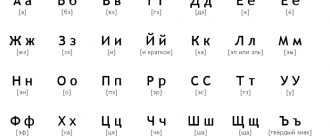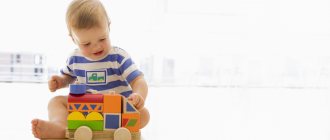Parents often wonder: how to teach a child to read and when should you start doing this? Experts recommend not to delay this issue. Of course, there is no point in showing your baby cards with letters, but he can and should read them.
To download a sheet with a story, right-click on it. In the window that opens, select “Save image as.” Save to your PC desktop and print.
Speech development tasks
To develop the speech of children 6-7 years old, you can use any topics, but the level of complexity of lexical material should correspond to older preschool age.
Mushrooms
- Call it kindly:
Boletus - boletus Milk mushroom - milk mushroom Basket - Moss fly - Glade - Forest - Toadstool -
- What is not suitable:
Butterfly, milk mushroom, mushroom, russula. Bush, grass, tree, lake. Cook, dry, salt, remove.
- One or many
Oiler - boletus Honey fungus - Boletus - Chanterelle - Lukoshko - Stump -
- Find the shortest word:
Boletus, boletus, mushroom, russula.
Birch, moss, meadow, honey fungus.
Stump, edge, moss, clearing.
- Explain why one picture is redundant here:
- Color the russula caps so that the largest mushroom is between the pink and green ones, and the green one is next to the yellow one:
Berries
- Choose a word:
Strawberry jam - strawberry jam from cranberries - from currants - from strawberries - from raspberries - from lingonberries - from blueberries -
- Call me kindly
Blueberries – Strawberries – Raspberries – Gooseberries – Lingonberries – Cranberries –
- Count in order (up to 5)
One sweet strawberry - two sweet strawberries - three... One gooseberry bush – One glass of jam – One dried raspberry –
- Change it like this:
Blueberry juice - blueberry From raspberries - From strawberries - From cranberries - From lingonberries - From currants - From gooseberries -
- Number the pictures in order and tell a story based on them:
- Color the same berries in the same color, draw the one you want in an empty cell, explain your choice:
Trees and shrubs
- What's extra:
Spruce, oak, raspberry, pine. Birch, linden, aspen, currant. Oak, alder, rose hip, ash.
- Change it like this:
Maple - Maple, Oak - Alder - Pine - Birch - Chestnut - Rowan -
- Say the opposite
Tall oak – Old spruce – Straight birch – Low bush –
- Complete the sentence:
A lot of birch trees - a birch forest, a lot of firs - a lot of oaks - a lot of pine trees - a lot of aspens -
Number the pictures and tell about the birch tree and the seasons:
- The berry does not grow under a Christmas tree or under a pine tree, and the fungus does not grow under a birch or under a pine tree. What grows where?
Vegetables
- Finish the sentence
In the garden my grandmother grew: cucumbers, eggplants, ... In the vegetable department they sell: potatoes, tomatoes, radishes, .... In autumn they collect: beets, carrots, ....
- Change according to the sample
Plant - planted - planted Dig - Collect - Fertilize - Weed - Grow -
- Change according to the sample
Juice from carrots - carrot From beets - From pumpkin - From tomatoes - From vegetables -
- Call me kindly
Eggplant - eggplant, radish - tomato - cucumber - peas - garlic - pumpkin - cabbage -
- Which picture shows the bulbs that mom planted before the others? Why do you say that?
- Which picture shows the beets that mom planted later than the others? Why do you say that?
Fruits
- How are they similar and how are they different?
Orange and grapefruit Orange and tangerine Orange and lemon Apple and quince Peach and apricot
- Change according to the sample
Jam from oranges - orange, from pears - from lemons - from apples - from pineapples - from peaches -
- Find the shortest word
Orange, pineapple, mango, apple. Pear, apricot, grapefruit, kiwi. Peach, banana, juice, lemon.
- Continue the sentence:
Fruits can be: boiled, dried, bought, picked... In the garden they collect: oranges, apples, peaches... I know exotic fruits: mango, kiwi, pomelo... Fruit can be: juice, pie, compote, yogurt.... Fruit can be: pastille, basket, chewing gum... Fruit can be: puree, jam, ice cream...
- Count in order (up to 5) One candied orange peel - two candied orange peels - three.... One peach pit -... One lemon cake –….
- Collect fruits in a basket, berries in a plate, vegetables in a box:
- Name all the fruits that are shown in the picture. Which ones are red?
Birds
- One and many
Goose - geese crow - swan - starling - rook - sparrow - tit -
- Call it kindly:
Chick - chick nest - feather - grain - branch -
- Find the word that is shorter than the others:
Crow, magpie, goose, loon. Tit, wagtail, nuthatch, owl. Woodpecker, swan, eagle, bullfinch.
- Choose a sign:
Bird - singing, migratory, nimble, .... The nest is strong, big, old... The feeder is wooden, spacious, durable, ...
- Change it like this:
Crane feather - crane feather of duck - peacock - sparrow - dove - ostrich - swan -
- How are they similar and how are they different:
Crow and ugly Chicken and peacock Goose and swan
Look carefully and try to find the artist’s mistakes:
Find in each row the bird that doesn’t fit with the others. Explain your decision.
Pets
- Continue the sentence:
The dog loves - The cat can - The horse can -
- Count in order (up to 5)
One affectionate cat – One domestic rabbit – One swift horse – One thoughtful cow –
Name the mothers and babies:
Sheep - lamb, Goat - Cow - Horse - Cat - Dog - Pig -
- Where is whose house?
Cow - barn Horse - Pig - Rabbits - Dog -
- Find the shortest word:
Cat, dog, cow, horse. Rabbit, pig, bull, cat. Goat, horse, sheep, dog.
- Continue as follows:
Many sheep - a flock Many cows - Many horses - Many dogs -
- Name all the animals that are hidden in the picture and remember the names of their babies.
- Compare and describe the puppies from each pair. How are they similar and how are they different?
Wild animals
- Tail and ears
In a fox - foxes and foxes In a hare - In a bear - In a wolf - In a squirrel - In a badger - In a moose -
- Whose house
Fox - hole Bear - Belichye - Wolf -
- Choose an action
Wolf - howls, runs, prowls,... Hare - Bear - Squirrel -
- Take a sign
Fox - cunning, dexterous, fast, fluffy, ... Burrow - Den - Teddy Bear -
- Describe the tracks of each animal or bird, how they differ from others.
Find the extra image in the picture. Explain your choice.
Cloth
Call it kindly:
Scarf – scarf, Jumpsuit – Coat – Blouse – Hat – Skirt – Pants –
- Choose a sign:
Fur coat – fur Blouse – Skirt – Sweater – Robe – Jacket –
- Continue the series:
Outerwear - coat, fur coat, raincoat, ... Home clothes - Holiday clothes - Work clothes -
- Change it like this:
Hat - hats - many hats Scarf - Dress - Shirt - Fur coat - Coat - Pants -
Name all the drawn objects and find the odd one among them.
- Tell us when to wear each of these items of clothing.
Shoes
- Continue the series:
There are boots - rubber, leather, autumn, ... There are boots - There are shoes - There are sneakers - Change according to the model Boots - there are no boots Sandals - Czech boots - Valenki - Sneakers - Shoes -
- Call it kindly:
Sneakers - sneakers Shoes - boots - slippers - felt boots - boots -
- Count in order (up to 5)
One rubber boot - two rubber boots - three rubber boots -..... One new shoe - One red shoe -
- Choose shoes according to the weather.
- Find the paired picture you need:
These exercises and pictures for the development of speech of a 6-7 year old child can be printed and turned into educational cards that are convenient to use for games and activities. Your son or daughter’s interest in such fascinating material will contribute to its quick and lasting assimilation.
Tasks from the book by S.I. Karpova, V.V. Mamaeva: Development of speech and cognitive abilities of preschoolers 6-7 years old
Positive experience
Emotionally developed, full of impressions, preschoolers quickly gain positive learning experiences. Additional incentive in the form of praise and support helps children self-motivate for educational activities.
Thanks to the rapid development of memory, attention, and mental operations, five to seven-year-old preschoolers are already able to receive and process a large flow of information. But this should not be abused. Still, this is a child’s brain, and the dose of information should be calculated specifically for the child’s age stage and the corresponding cognitive experience of the child.
Author's methods
- Zaitsev's technique . Zaitsev's cubes help develop syllabic reading skills by memorizing letter combinations and then composing syllables.
- Doman's technique . Using this technique, you can learn to remember the spelling of syllables.
- Montessori method . This “touch” technique allows you to learn the alphabet using tactile sensations.
Learn more about these methods in comparison and when you need to start teaching your child to read in the video below:
None of the methods is ideal.
They all boast a list of shortcomings. But they also have interesting points. You can turn to them when you and your child have fully mastered the basic sound-letter method.
Game "Composing words from letters"
A game similar to one of those discussed above. The only difference is that you need to play it with your child only in those cases when, when reading, he does not switch to letter-by-letter reading and has already adapted to pronouncing and voicing merged syllables.
To play the game, you will need to cut out letters from some alphabet (you can even donate two or three alphabet letters for this task). The letters are laid out in front of the child, and he must form existing words from them.
It is more interesting to play this game if you specifically select a set of letters. For example, place the letters F, E, N, O, T, L, E in front of your baby and see what words he can make up from them. If you want to complicate the game, you can give your child the task of forming two words at the same time, having prepared the appropriate set of letters in advance. For example, put the letters Y, O, S, Ch, K, A in front of him, and give him the task of making up two words denoting the names of drinks (it is recommended to choose words related to one general concept, but when the task becomes easy, this recommendation can be omitted stick to).
9
If I can, I will help. Funny pictures.
The book is also a collection based on materials from “Funny Pictures.” But it's built differently. It contains 29 sheets of picture stories for viewing and making up fairy tales and funny stories. Wonderful drawings and very original stories: “The Greedy Bear”, “The Adventures of Vasya Kalendarkin and his smart puppy Ursik”, “How I started skating”, “The cat loves the fish, but I don’t want to get into the water”, “How the bunny helped Carry a Carrot”, “The Dressmaker” and others.
It's very interesting to tell stories using pictures like this!
Game "Finish the word"
Another game with pictures, but in this case absolutely any pictures will do, from postcards to magazine clippings. Using paper clips, you need to attach pieces of paper to the pictures with the first letters of the names of what is depicted on them written on them. The endings of words also need to be written on pieces of paper and laid out in front of the child. His task is to look at the image, read the beginning of the word and find a piece of paper with a suitable ending (for variety, add non-existent endings to the pieces of paper).
There is another version of this game, but without pictures. The beginnings of words that relate to one general term (animals, dishes, clothes, furniture, shoes, seasons, etc.) are written on the cards. On other cards the endings of words are written. The child’s task is to correctly form the words, and then say how all this can be called in one word, for example: “boots” + “sneakers” + “felt boots” “shoes”, “coat” + “pants” + “skirt” “clothes” and so on.
6
Preparing a preschooler for reading and writing
Parents strive to teach their preschooler to read and write, but it is not recommended to do this on their own, because... It is required to follow a special teaching methodology. Teachers in kindergartens and development centers provide preparation for school.
Teachers teach children not letters, but sounds on which syllables and then words are built. Particular attention is paid to phonemic hearing and sound pronunciation.
The family plays an important role in learning to read and write. Parents should strive to instill in their children a love of books by their own example, and together with their children, build a home library. There should be literate speech in the house without filler words.
The main form of speech development at home is meaningful conversation. By communicating, family members not only enrich children's vocabulary, but also create a favorable atmosphere for emotional, cognitive and social development.
Exercise “Choose a word”
The exercise is based on selecting groups or pairs of words that are logically connected. It is noteworthy that in order to establish a logical connection, the child simply needs to read the words and comprehend its meaning.
The exercise can be filled with any content, but the organizational form is always the same: you need to come up with and write words on separate cards in advance, and then invite the child to read them and connect the cards into semantic groups. Here are some suitable examples:
- What is usually poured into a plate and what into a mug? Among the options may be the words: “tea”, “soup”, “coffee”, “borscht”, “juice”, “ear”, “cocoa”, etc.
- What applies to furniture/dishes/products/animals? Among the options may be the words: “nut”, “dog”, “chair”, “cup”, “honey”, “deer”, “chair”, “cat”, “kefir”, etc.
- Choose the appropriate word for these words (point to a group of words) (point to the mixed cards with words)
- Match all the words with as many words as possible that match the meaning (you also lay out cards with words in front of the child, and let him connect them in groups)
- Choose words that have opposite meanings (for example, “white - black”, “big - small”, “clear - gloomy”, “cheerful - sad”, etc.)
Choose different exercise options, developing your child’s logical thinking along with reading skills.
8
Texts for children 6-7 years old
If you are preparing reading texts for children 6-7 years old, you can print out entire paragraphs. For work, choose excerpts from fairy tales and short stories. Large works can be worked on in 2-3 lessons. Don't forget about short stories from the alphabet or primer.
General recommendations
- Work through the sentences in a chain, try to involve each student.
- After reading a short passage for the first time, discuss the content. If you find any misunderstandings, read the passage again.
- If we read syllables individually, different texts for reading to children 7 years old need to be printed on separate sheets.
Texts with tails:
Who is faster: boys or girls
Of course, each baby is unique and develops at its own pace. In practice, a slight delay in speech development may turn out to be only an individual feature. Moreover, the rate of speech development can be affected by: illness, stress, lack of communication with surrounding adults, or the multilingual environment in which the baby grows up.
And it can still be very difficult to resist the temptation to compare your child with others. Why do some children at the age of 2 already read passages from “Moidodyr” from memory and speak in whole phrases, while others need another 1.5 - 2 years to be at the same level? Should I be worried about this?
In modern psychology, two types of children with normally developing speech are distinguished: “talkers” and “silent ones.”
- “Talkers” show increased activity and interest in the world around them. Such children love to tell stories, ask a lot of questions and easily get accustomed to new surroundings. Sometimes they start talking earlier than other children.
- “Silent people” tend to be contemplative. They always need to adapt to new surroundings. They may start speaking late, but almost immediately without defects. It is important for such kids to be heard and understood. Therefore, parents should try to respond carefully to the child’s questions. However, if the “silent child” has not begun to speak by the age of 2–3 years, you need to contact a specialist.
According to statistics, boys begin to develop speech later than girls. One of the reasons lies in physiology. Brain maturation occurs faster in girls. This affects the growth of vocabulary: by the age of 2, girls usually have twice as much vocabulary as boys of the same age. Plus, they are more emotional by nature and happily share all their impressions, while boys tend to show greater verbal restraint, speaking only “to the point.”
In addition, numerous studies have shown that the higher the child’s motor activity, the better speech development. It makes sense that more active kids might begin to demonstrate advanced language skills before their slower peers.
Playing with a child promotes speech development. Encourage him to move more, and the baby will happily pick up the game.
Algorithm for teaching reading
- Alphabet
First you need to introduce your baby to the alphabet.
Learning should start with hard vowels: A, O, U, E, I, Y. Then move on to hard voiced unpaired consonants: L, M, N, R. At the end, move on to complex vowels: E, E, Yu, I and consonants that are difficult for a preschooler to perceive - hissing, deaf, hard voiced paired (B, V, G , D).
When naming consonants, you cannot designate them as “em”, “el” or “me”, “le”. You need to pronounce the sound itself. For example, “This letter sounds like this: “m.” Otherwise, the child may not learn to put letters into syllables and when reading there is a risk of getting something similar to “me-a-me-a” instead of “ma-ma.”
- Syllables
The next step is to connect the letters into syllables. Methods of teaching this will be discussed in detail below.
- Words
The ultimate goal of learning is to add syllables into words and develop continuous reading skills.
( 1 rating, average 5 out of 5 )
Game “Composing words from syllables”
Here you can completely do without pictures. To play, you will need to write several two-syllable words on cards, for example, “river”, “mother”, “lotto”, “accordion”, “leg”, “hand”, etc. Then you need to cut the cards into two halves and mix them.
The child’s task is to compose words from syllables, and he must choose the sequence independently. In addition to the fact that the baby will learn to read words correctly, he will also understand their semantic meaning. If non-existent words appear, point this out to him, but if he makes up words that are unfamiliar to him, explain their meaning.
A similar game can be played with words of three syllables. Often this option is much more interesting than the first.
5
